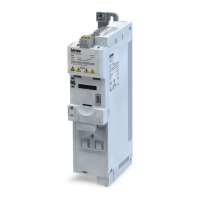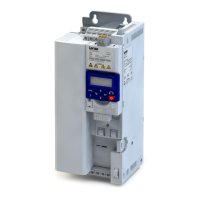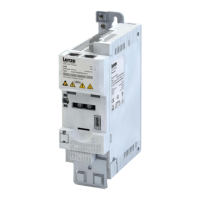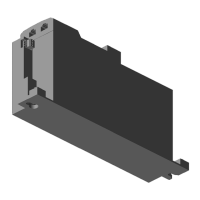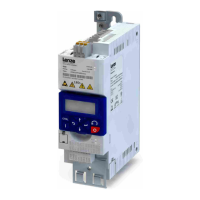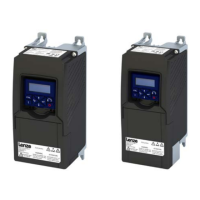Example for operang mode
In the following example, the "Deacvate PID controller" funcon is used to deacvate the
PID control temporarily:
•
As standard setpoint source, the frequency preset 1 is set to 20 Hz.
•
Switch S1 starts the motor in forward direcon of rotaon. Switch S1 in the inial posion
stops the motor again.
•
Switch S2 deacvates the PID control. The motor is then driven in a speed-controlled way.
Connecon plan funcon
GND
AI1
AI2
AO1
10V
24V
DI1
DI2
DI3
DI4
DI5
DO1
X3
S1 S2
Switch S1 Run
Switch S2 Deacvate PID controller
Parameter Name Seng for this example
0x2631:001 (P400.01) Enable inverter Constant TRUE [1]
0x2631:002 (P400.02) Run Digital input 1 [11]
0x2631:004 (P400.04) Reset fault Not connected [0]
0x2631:045 (P400.45) Deacvate PID controller Digital input 2 [12]
0x2824 (P200.00) Control selecon Flexible I/O conguraon [0]
0x2838:003 (P203.03) Stop method Standard ramp [1]
0x2860:001 (P201.01) Frequency control: Default setpoint source Frequency preset 1 [11]
0x2911:001 (P450.01) Frequency setpoint presets: Preset 1 20 Hz
0x2916 (P211.00) Maximum frequency 50 Hz
The example assumes that the process controller has been congured accord-
ingly. 4Conguring the process controller ^ 407
Flexible I/O conguraon
Process controller funcon selecon
586
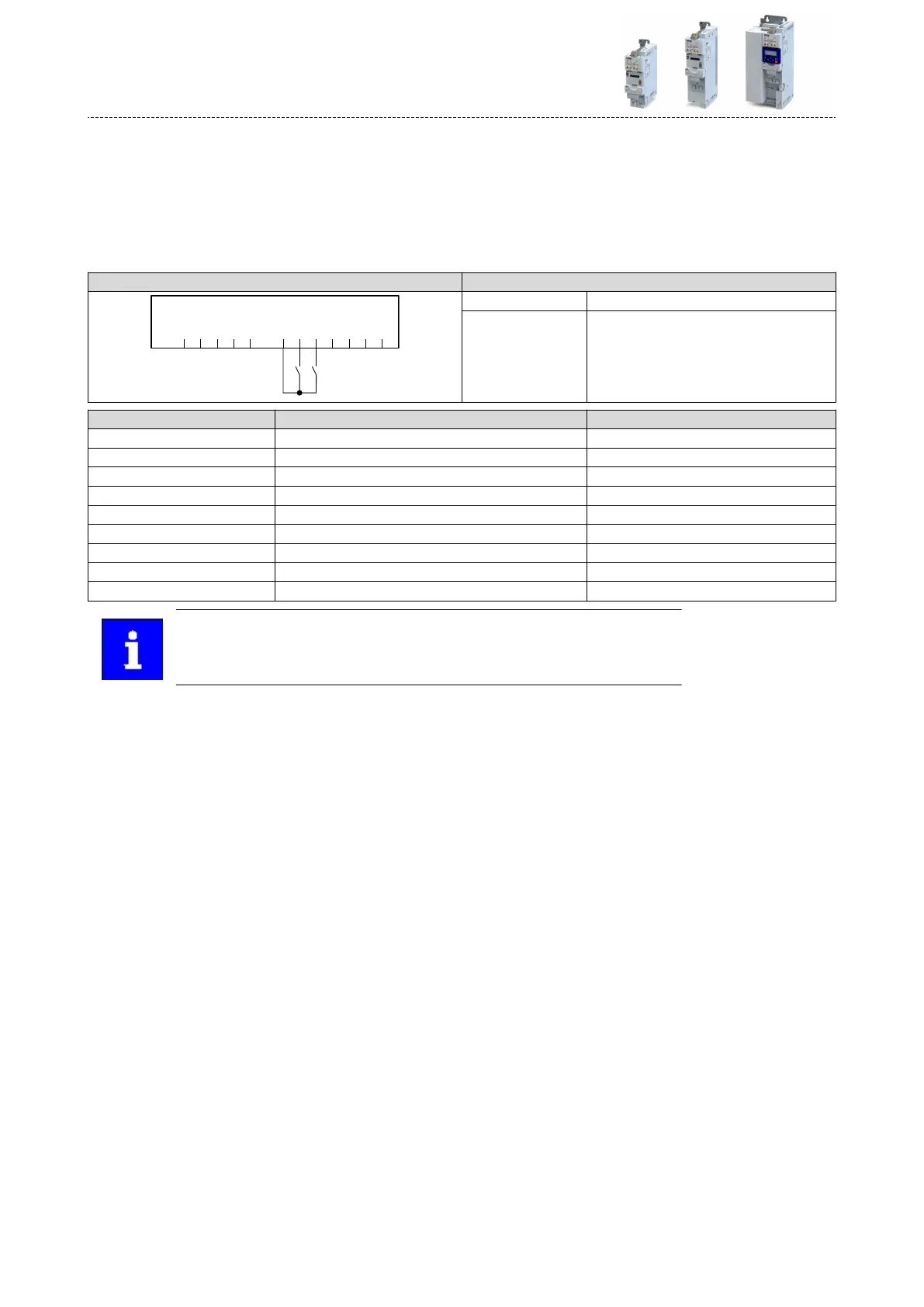